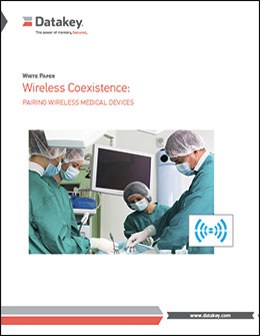White Papers
Wireless Coexistence: Pairing Wireless Medical Devices

With the proliferation of wireless medical devices in-and-around medical facilities, it is critically important that wireless medical devices be able to coexist with each other and that the electromagnetic emissions from other devices not interfere with normal operation. If interference prevents the transmitted data from being properly received, this could seriously impact timely communications of patient information or medical device control commands.
The US Food & Drug Administration (FDA) recognizes the challenges faced by manufacturers of medical devices that use wireless communications. In 2013, the FDA issued guidance for medical device manufacturers to ensure the safety of devices they market titled, “Radio Frequency Wireless Technology in Medical Devices." In the document, the FDA defines the term wireless coexistence, as the ability of one wireless system to perform a task in a given shared environment where other systems (in that environment) have an ability to perform their tasks and might or might not be using the same set of rules. To ensure wireless coexistence, the FDA recommends testing and analysis that includes products or devices that would be expected to be used in the same environment as the wireless medical device. This would include addressing security and how the association between multiple instances of a wireless medical device is accomplished to prevent unintentional cross-talk.
The white paper, Wireless Coexistence: Pairing Wireless Medical Devices, examines the concept of wireless coexistence and provides four methods for intentionally linking or pairing two or more devices to prevent unintentional cross-talk. The method of using a removable, non-volatile memory device to transfer device ID information between transmitter and receiver is examined in detail, and a case study showing how Stryker Endoscopy utilized this method for the wireless transmission of high-definition video is also included.
To download the white paper, please click on the "Get Your Copy" button and then complete the form. An email containing a link to the white paper (PDF) will be sent to you immediately.